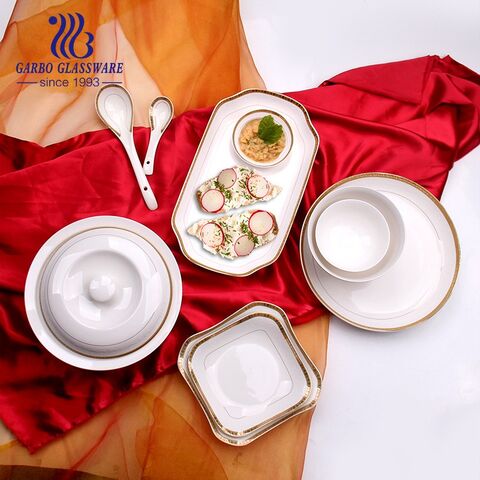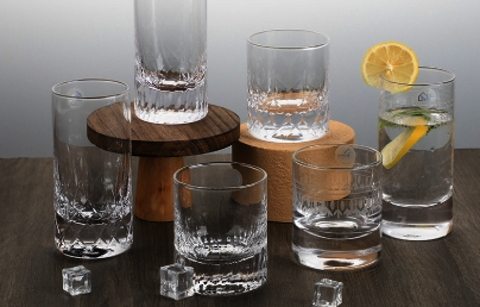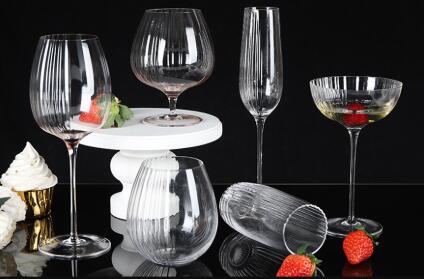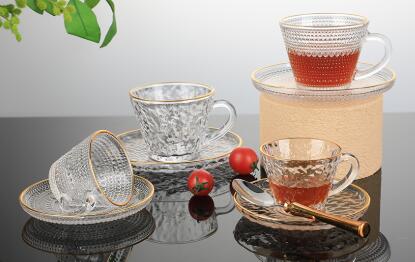How to choose ceramic tableware
Pulished on Jan. 08, 2020The broken things are precious and can carry more value. This sentence can't be more appropriate for porcelain. A flawed beauty is even more precious. Today I will tell you something about ceramic tableware. When it comes to ceramics, I'm afraid few people haven't seen it. From tableware, cups, and saucers, to vases. So do you know how to choose good ceramic tableware?

1. From the quality
When buying ceramic daily necessities, bone china and reinforced porcelain are preferred. Both are made of fine tableware. Bone china is a kind of high-grade porcelain recognized in the world. It is not pure white, but natural milky white, with high transparency and light texture. The shaping and color formation of the ashes are mainly based on silica, alumina and calcium oxide. The higher the content of calcium oxide, the better the color. In nature, there are not many sources of calcium oxide, so animal bone meal is selected as the source of calcium oxide. When the bone powder content reaches a certain ratio, the porcelain quality will be greatly improved, which is mainly reflected in the gloss and moisturization of the utensil. However, if the content exceeds a certain ratio, the porcelain will become softer, it will be difficult to form during the production process, and it will be difficult to fire. If the process is not properly controlled, the amount of lead dissolution will exceed the standard, so the price will be the highest. Reinforced porcelain contains magnesia, which has outstanding features such as high whiteness, high strength, and high thermal stability. Its whiteness, such as jade and crystal moisturization, are ideal for various households, and the price is as good as bone china.

2. From the perspective of flower decoration
According to the characteristics of the flower surface, it can be divided into on-glaze, middle-glaze, under-glaze and glazed porcelain and some unpainted white porcelain. What is glaze? Glaze is a kind of courageous substance. The glaze is applied to the ceramic body. After passing through the kiln, the ceramic product can get a shiny and non-absorbent surface, that is, water. The finished surface will be rough and dull, such as purple sand pottery.
Glazed on: Glazed ceramic is a product made of ceramic paper pasted on the glaze or painted directly on the surface of the product with pigment, and then baked at 700 ℃ ~ 850 ℃. Because the roasting temperature does not reach the melting temperature of the glaze layer, the flower surface cannot sink into the glaze, but can only cling to the surface of the glaze layer. If you touch it with your hands, the surface of the product will feel uneven, and the level will be uneven.
The glaze: The glaze firing temperature is higher than the glaze color, reaching the melting temperature of the glaze of the product. The ceramic pigment sinks into the glaze when the glaze melts, and is covered by the glaze layer after cooling. The surface of the product is smooth like glass without touching the surface.
Underglaze color: Underglaze color ceramic is a traditional decoration method in China. All the color decoration of the product is performed on the porcelain blank, and it is fired at a high temperature after glazing. This product is the same as glaze, the flower surface is covered by the glaze layer, the surface is bright and flat, and there is no unevenness.
Black-color glazes porcelain: Color glaze porcelain is a kind of high-temperature coloring agent added to the ceramic glaze to make the glazed surface of the fired product show a certain color, such as yellow, blue, pea blue.
White Porcelain: White porcelain usually refers to ceramics without any decoration. Such products are generally not sold in the market.
Compared with the above several decorative methods, the underglaze color is mostly traditional blue and blue and exquisite, the color is monotonous, and the price is moderate; the glaze color is richer than the underglaze color, the product grade is higher, but the process is strict, and The cost is high and the selling price is high. The glaze-colored ceramics are rich in color, strong in three-dimensionality but low in surface smoothness, and easy to process, so the cost is correspondingly low.
In addition to the different artistic effects of the above different decoration methods, the main difference is also in the content of lead, cadmium and other heavy metal elements. Among them, the content of lead and cadmium in glazes and underglazes and most of the glaze porcelains and white porcelains is very low, and if glazes are used in ceramic flower paper processing, use inferior pigments or design on the flower surface If the amount of lead and cadmium-containing pigment is too large, or the temperature and ventilation conditions are insufficient during roasting, it will easily cause the amount of lead and cadmium to dissolve.

3.Quality standards of ceramic tableware
Appearance quality standards:
Appearance quality is an important indicator for the classification of products. China's current product standards divide products into three categories: superior products, first-class products, and qualified products. The superior product is equivalent to the international advanced level, the first-class product is the domestic advanced level, and the qualified product is the domestic general level. The appearance quality of the superior products basically meets the requirements of "five without one small", that is, no spots, no dross, no color dirty, no pinholes, no glazed scratches, and small deformation. Spots (black spots) are commonly known as fly dung. If there are spots on the product, it will always give people an unclean feeling, which will affect appetite. First-class products and qualified products have more loose requirements for superior defects than superior products.
Lead and cadmium dissolution standard:
The dissolution of lead and cadmium is an important safety and health indicator of ceramic products. The presence of lead and cadmium is due to the component contained in the ceramic pigment in the decorative pattern on the surface of the product. The presence of lead may also be caused by the addition of lead-containing components to reduce the firing temperature of the surface glaze of the product. If the production process is not properly controlled, it will easily cause the excessive dissolution of lead and cadmium during use. Frequent use of such products can easily lead to lead and cadmium poisoning. The national standard GB12651-2003 "Allowable limit of lead and cadmium dissolution of ceramic products in contact with food" is a national mandatory standard, and its scope of application covers all daily-use ceramic food and beverage appliances. The standard stipulates that the dissolution amount of lead and cadmium of any single product must not exceed the specified allowable value. The flat product (products with a depth of less than 25mm from the lowest level inside the product to the horizontal level of the lip) is specified as: the lead dissolution amount is 7mg / l Cadmium dissolution amount is 0.50mg / l; small hollow products (products with a depth from the lowest level inside the product to the horizontal level of the lip of 25mm or more and a capacity less than 1.1L) are specified as lead dissolution amount of 5.0mg / l, cadmium dissolution 0.50mg / l; Large hollow products (products with a depth from the lowest level inside the product to the horizontal level of the lip of 25mm or more and a capacity of 1.1L or more) The specified values are: 2.5mg / l of lead dissolution, 0.25mg of cadmium dissolution / l.
Thermal stability standard:
Thermal stability means that the product does not crack or break during the heat and cold exchange. The thermal stability can reflect the service life of ceramic products. The greater the temperature difference between cold and heat exchange, the longer the service life. Standards generally require heating to 180 ° C and then pouring into 20 ° C water. Take out and observe whether there is damage. No damage occurs at this temperature, and its service life can generally reach 2 to 3 years.

4. Purchase method
The first is "seeing", which is to carefully observe the top, bottom, inside and outside of the porcelain to see if the product has large defects such as deformation and black spots, and then look at the whiteness, light transmission and glazed gloss of the product.
Second is "listening", that is, listening to the sound made when the porcelain is gently flicked. If the sound is crisp and pleasing, it means that the porcelain tire is fine and dense without cracks. When it is fired at high temperature, the porcelain is complete. If the sound is dumb, it can be concluded that the porcelain tire is cracked or the porcelain is incomplete, and this type of porcelain is easy to crack after changing hot and cold.
The third is "ratio", that is, comparison. For matching porcelain, compare the accessories to see if their shapes and picture decoration are consistent.
Fourth is "test", that is, test cover, test installation, test. Some porcelains have lids, and some porcelains are composed of several components. When choosing porcelains, don't forget to test the lids and try to assemble the components to see if they are suitable.










